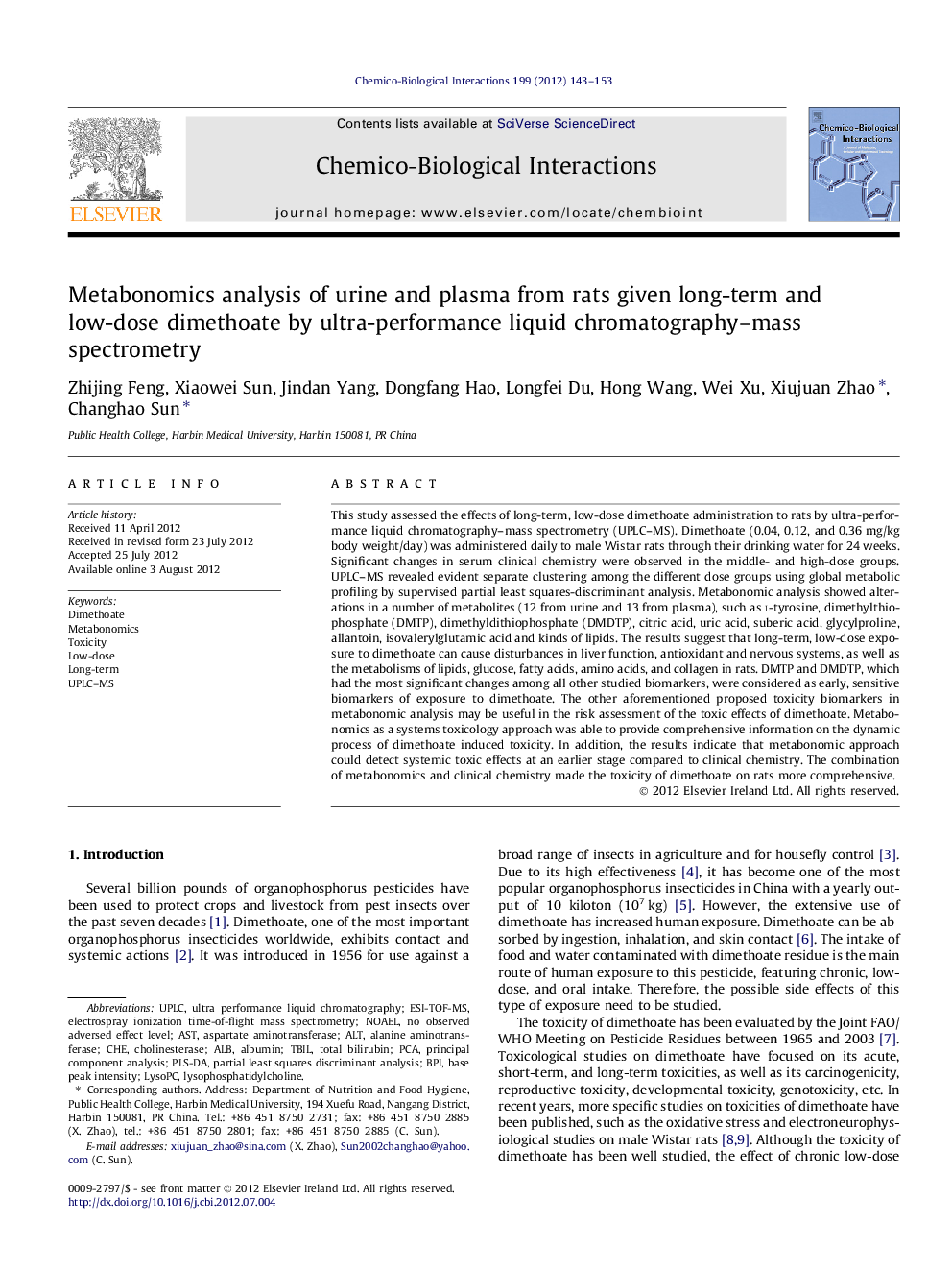| کد مقاله | کد نشریه | سال انتشار | مقاله انگلیسی | نسخه تمام متن |
|---|---|---|---|---|
| 2580864 | 1130162 | 2012 | 11 صفحه PDF | دانلود رایگان |

This study assessed the effects of long-term, low-dose dimethoate administration to rats by ultra-performance liquid chromatography–mass spectrometry (UPLC–MS). Dimethoate (0.04, 0.12, and 0.36 mg/kg body weight/day) was administered daily to male Wistar rats through their drinking water for 24 weeks. Significant changes in serum clinical chemistry were observed in the middle- and high-dose groups. UPLC–MS revealed evident separate clustering among the different dose groups using global metabolic profiling by supervised partial least squares-discriminant analysis. Metabonomic analysis showed alterations in a number of metabolites (12 from urine and 13 from plasma), such as l-tyrosine, dimethylthiophosphate (DMTP), dimethyldithiophosphate (DMDTP), citric acid, uric acid, suberic acid, glycylproline, allantoin, isovalerylglutamic acid and kinds of lipids. The results suggest that long-term, low-dose exposure to dimethoate can cause disturbances in liver function, antioxidant and nervous systems, as well as the metabolisms of lipids, glucose, fatty acids, amino acids, and collagen in rats. DMTP and DMDTP, which had the most significant changes among all other studied biomarkers, were considered as early, sensitive biomarkers of exposure to dimethoate. The other aforementioned proposed toxicity biomarkers in metabonomic analysis may be useful in the risk assessment of the toxic effects of dimethoate. Metabonomics as a systems toxicology approach was able to provide comprehensive information on the dynamic process of dimethoate induced toxicity. In addition, the results indicate that metabonomic approach could detect systemic toxic effects at an earlier stage compared to clinical chemistry. The combination of metabonomics and clinical chemistry made the toxicity of dimethoate on rats more comprehensive.
► We assessed the toxic effect of dimethoate by metabonomics.
► Research dose was consistent with the human exposed dose.
► We found more toxic information about dimethoate than conventional toxicology method.
► We conclude DMTP and DMDTP was considered as biomarkers of exposure to dimethoate in urine.
► We conclude glucose, fatty acid and amino acid metabolism, were disturbed by dimethoate.
Journal: Chemico-Biological Interactions - Volume 199, Issue 3, 30 September 2012, Pages 143–153